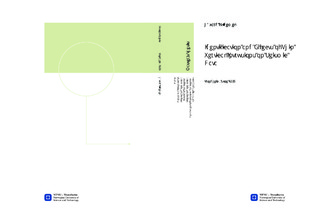| dc.description.abstract | In this report I consider a case with a simple three-dimensional two-layer model penetrated by a thin vertical intrusion. Synthetic seismic data is generated, and a number of events are identified. The identified events affected by the vertical intrusions are a prismatic wave, reflected from both the layer boundary and the intrusion wall, and two diffractions. The first diffraction event occurs where the intrusion penetrates the layer boundary (representing a vertical change in elastic parameters), while the second one occurs where the intrusion terminates in the bottom layer. The focus in this report is mainly on the prismatic wave, as this generally displays higher amplitude than both diffraction events.Experiments were carried out to investigate amplitude trends. The experiments were carried out by changing the elastic parameters and thickness of the intrusion, and by changing the dominant wavelet frequency. Specifically, cases were constructed to simulate the case of bore holes (with water/mud-based drilling/injection fluids or concrete casings), and a case with a gas pipe as discussed in Løseth et al. (2011). The results suggested an increase in amplitude both with increasing dominant wavelet frequency and with increasing contrast in elastic parameters. The amplitudes were strongly affected by changes in intrusion thickness, and the case simulating a gas pipe displayed relatively high amplitude compared to all simulated well cases.Finally, the synthetic seismic data was migrated using 2D Reverse-time migration, and the result was compared to the original model. While signals pertaining to the intrusion were weak compared to events such as the layer reflection, filtering procedures allowed the intrusion to be identified on the migrated image. In spite of the prismatic event being stronger than the diffraction events, the latter made the stronger contribution in the images. This is likely due to the migration successfully collapsing the diffraction hyperbolas to their respective point origins, while the signal from the prismatic wave has to be divided across the intrusion wall. Given more time, 3D migration should be performed, and should yield stronger contributions to the image for the events affected by the intrusion (scattered events in general). | nb_NO |

